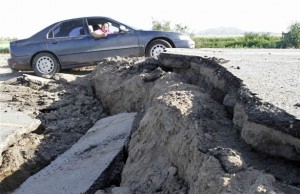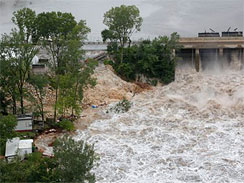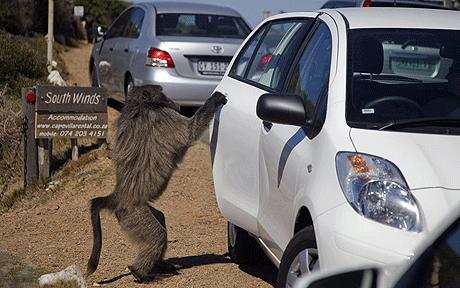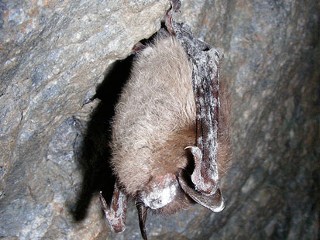
© Don Bartletti/Los Angeles Times/MCTA few miles from the epicenter of a 7.2 earthquake on April 4, 2010, a passenger snaps a photo of a huge crack in the road in Mexicali, Mexico. The road to Ejido Cucapah, one of several farming villages south of Mexicali, is etched with sinkholes, cracks and buckled pavement.
Los Angeles - As University of California at Davis physicist and geologist John Rundle ponders the map of recent California earthquakes, he sees visions of a doughnut even Homer J. Simpson wouldn't like.
The doughnut is formed by pinpointing the recent quakes in Eureka, Mexicali and Palm Springs.
Seismologists call the possible pattern a Mogi doughnut. It's the outgrowth of a concept, developed in Japan, which holds that earthquakes occur in a circular pattern over decades - building up to one very large quake in the doughnut hole. Rundle and his colleagues believe that the recent quakes, combined with larger seismic events including the 1989 Loma Prieta and 1994 Northridge temblors, could be precursors to a far larger rupture.
They just don't know exactly when.
The idea of predicting earthquakes remains controversial and much debated among California's many seismologists. But as technology improves and the understanding of how earthquakes distribute energy grows, experts are gingerly offering improved "forecasts," some of which have been surprisingly prescient.
For example, Southern California was hit earlier this month by a 5.4 quake that struck in the mountains about 30 miles south of Palm Springs - several weeks after seismologists at the Jet Propulsion Laboratory and elsewhere warned that pressure was building in the San Jacinto fault zone, which is where the temblor occurred.
That forecast underscores new thinking by seismologists about how earthquakes occur.



